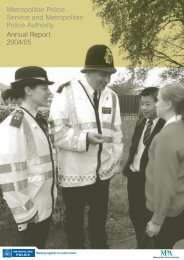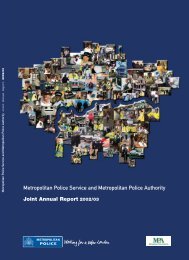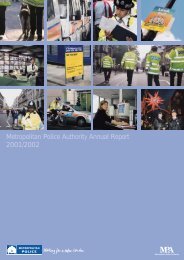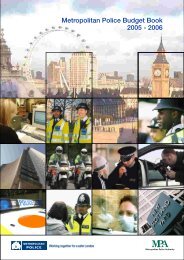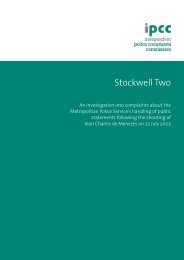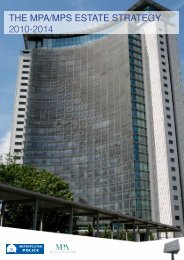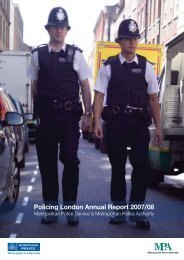MPA Race Equality Scheme 2005-2008
MPA Race Equality Scheme 2005-2008
MPA Race Equality Scheme 2005-2008
- No tags were found...
You also want an ePaper? Increase the reach of your titles
YUMPU automatically turns print PDFs into web optimized ePapers that Google loves.
‘nationality’ in the legal sense of citizenshipof a nation state, which an individualacquires at birth or through naturalisation.For example, English, Scottish and Welshpeople are racial groups, defined byreference to their national origins. Nationalorigins may include origins in a nation thatno longer exists (Czechoslovakia, forexample), or in a 'nation' that was never anation state in the modern sense, such as'the Basque nation'.PoliciesThe formal and informal decisions taken byan authority on how it carries out its dutiesand uses its powers.Positive actionAction permitted by the <strong>Race</strong> Relations Act1976 that allows employers and others toprovide training and encouragement topeople of a particular racial group, if theyhave been under-represented in particularwork during the previous 12 months(sections 37 and 38).Social inclusionA form of inclusion that allows a person toaccess and benefit from the full range ofopportunities available to members ofsociety. It aims to remove barriers forpeople and areas that experience acombination of linked problems such asunemployment, poor skills, low incomes,poor housing, high crime rates, poor healthand family breakdown.Specific DutyUnder the <strong>Race</strong> Relations (Amendment)Act 2000, the specific duty says that apublic authority to whom the Act appliesmust prepare and publish a race equalityscheme. The scheme should set out howthe authority plans to meet its general andother specific duties to promote raceequality.Positive discriminationPositive discrimination occurs whensomeone is selected to do a job purely onthe basis of their race, not on their ability todo the job. This is illegal under the <strong>Race</strong>Relations Act.<strong>Race</strong>The <strong>Race</strong> Relations Act uses ‘race’ both todescribe the catch-all class that receivesprotection under the Act, that is, ‘racialgroup’, and as one of five sub-classes thatfall within it (race, colour, nationality, ethnicor national origin).<strong>Race</strong> equality<strong>Equality</strong> between all individuals and groupsregardless of race, colour, nationality, ethnicor national origin.39


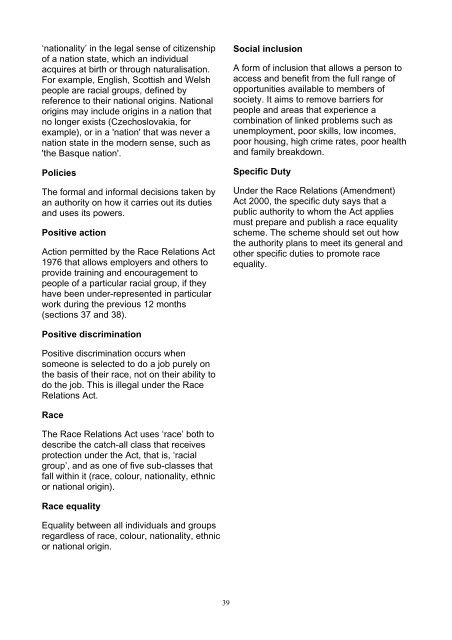


![Appendix 1 [PDF]](https://img.yumpu.com/51078997/1/184x260/appendix-1-pdf.jpg?quality=85)
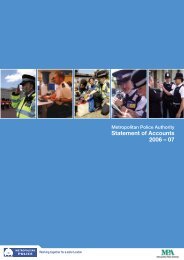
![Transcript of this meeting [PDF]](https://img.yumpu.com/50087310/1/184x260/transcript-of-this-meeting-pdf.jpg?quality=85)
![Street drinking in Hounslow [PDF]](https://img.yumpu.com/49411456/1/184x260/street-drinking-in-hounslow-pdf.jpg?quality=85)
